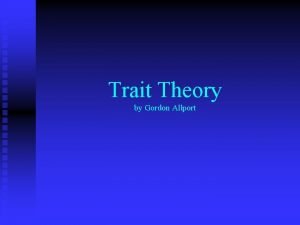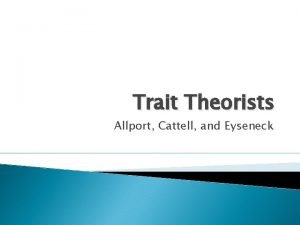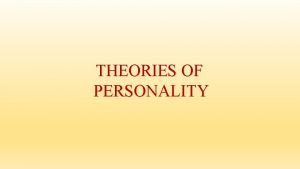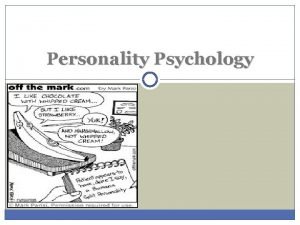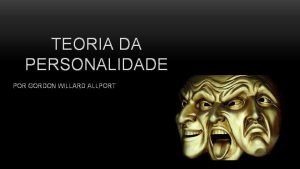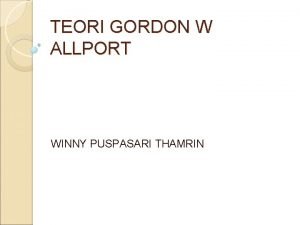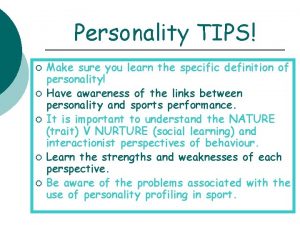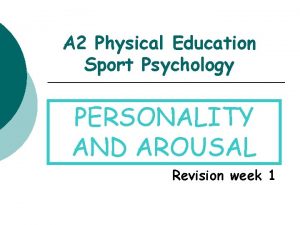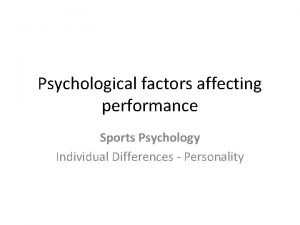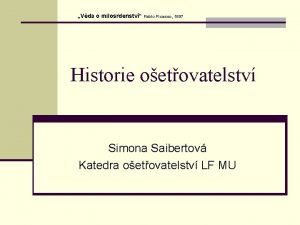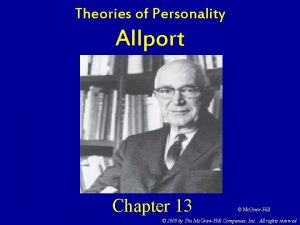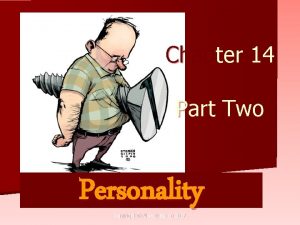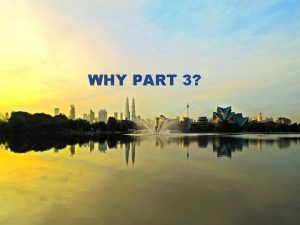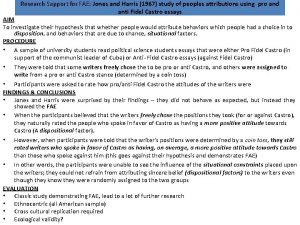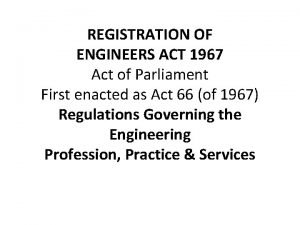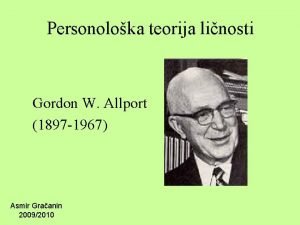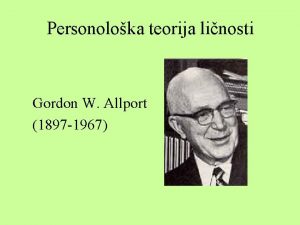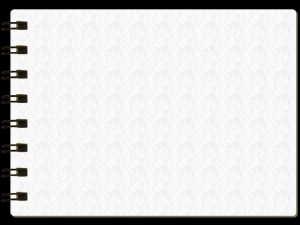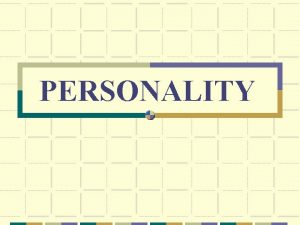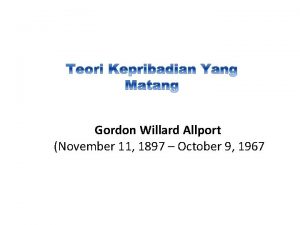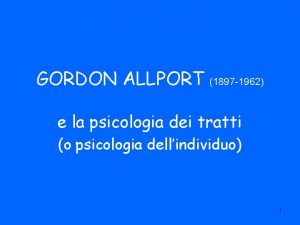Gordon Allport 1897 1967 Theory Personality the dynamic
















- Slides: 16

Gordon Allport 1897 -1967

Theory Personality “the dynamic organization within the individual of those psychophysical systems that determine his unique adjustments to the environment” (later changed to “that determine his characteristic behavior and thougt”

Theory Traits l l Primary units of study of personality Predispositions to respond in the same or similar manner to different stimuli.

Theory Two main types of traits: 1. Common traits l Possessed by many people (including cultures) to a varying extent l How we compare to others (nomethetic research) l Explains unique variations among people

Theory 2. Personal dispositions (individual traits) l l l Unique to or possessed by only one person l “peculiar to the individual” Unique variations within an individual (ideographic research) 3 kinds l Cardinal traits • The most significant and dominant feature of an individuals personality • So pervasive it touches most aspects of a person’s life • Not many people have these

Theory l l Central Traits • Typify our normal functions • Usually involves 5 to 10 adjectives type of words we might use to describe someone Secondary traits • Somewhat consistent but less influence as central traits

Personality Development Proprium l l His term for the “self” The core of our personality l Those characteristics which we consider to be “peculiarly mine” “the totality of the person as process, an entity that is becoming” l Contains the vital physical, psychological, and social aspects help define our sense of self Propriate Striving

Proprium Development 1. Bodily sense (birth to age 1) What is me and what is not l The sense of one’s body, its separateness from other bodies, and its basic parts 2. Self Identity (age 1 to 2) l Names self l The sense of inner sameness, of continuity to the self, and having a distinct name l Depends on capacity for language l

Proprium Development 3. Self Esteem (age 2 to 3) Pride through achievement l The sense of competence and to feel some self control over ones environment l Test the limits of our environment and often refuse to take orders from others 4. Self Extension (age 3 -4) l Identifies “ego extensions” l The sense of possessing external objects and/or people l Eventually helps produce loyalties l

Proprium Development 5. Self Image (age 4 to 6) l Good and bad me l Begin to evaluate present abilities and future possibilities l Compare what we do with others expectations of us l Awareness of satisfying or not satisfying parents expectations l Saw this as foundation of adult conscience 6. Self as Rational Coper (age 6 to 12) l Learn problem solving skills, how to think rationally, and deal with reality

Proprium Development 7. Propriate Striving (Age 12 to 20 s) l Motivational period of who a person wants to be and wants to become (greater influence than past) l Involves long range goal planning, etc. l Functional autonomy begins 8. Self as knower (adulthood) l Awareness of self l Merging of all the other stages

Theory A motive of behavior may begin as a result of something that has happened in a child’s life or other need It will eventually start to function independently of its origin l Functional autonomy

Theory Two types of functional autonomy: l Perseverative functional autonomy l Repetitive and habitual, daily tasks / behavior l l l Would include psychological addictions here Continue w/o any external reward No longer serves original purpose but continues

Theory l Propriate functional autonomy l l l Continues even though the motivation has changed More important than perseverative functional autonomy Unique to the individual More self directive Values and personal motives that enhances a person’s self esteem and image (proprium)

The Healthy Adult Capacity for Self Extension l Broad interests Acceptance of self and others, ability for warm human interaction l Intimacy w/o possession or jealousy Emotional Security, Self Acceptance, and Realistic perceptions l Positive self image l Tolerance to accept conflicts and frustrations of life l See events as they are (and ourselves), not as we hope them to be l Unrealistic optimism and pessimism avoided

The Healthy Adult Ability to plan and delay gratification l Discipline and self control Self Objectification and Insight l Seeing oneself objectively with insight and humor Demonstrate a Uniform Philosophy of Life l Movement toward some unifying orientation in life
 Allport's trait theory
Allport's trait theory Gordon allport’s trait theory
Gordon allport’s trait theory Eyseneck
Eyseneck Theories of personality
Theories of personality Raymond cattell
Raymond cattell Teoria de allport
Teoria de allport Teori gordon allport
Teori gordon allport Allport's scale diagram
Allport's scale diagram Hollander 1967 model of personality
Hollander 1967 model of personality Hollander 1967 model of personality
Hollander 1967 model of personality Psychological factors affecting sports performance
Psychological factors affecting sports performance Picasso 1897
Picasso 1897 Allport theory
Allport theory Allport trait theory
Allport trait theory Architects act 1967
Architects act 1967 Jones and harris 1967
Jones and harris 1967 Rea 1967
Rea 1967
